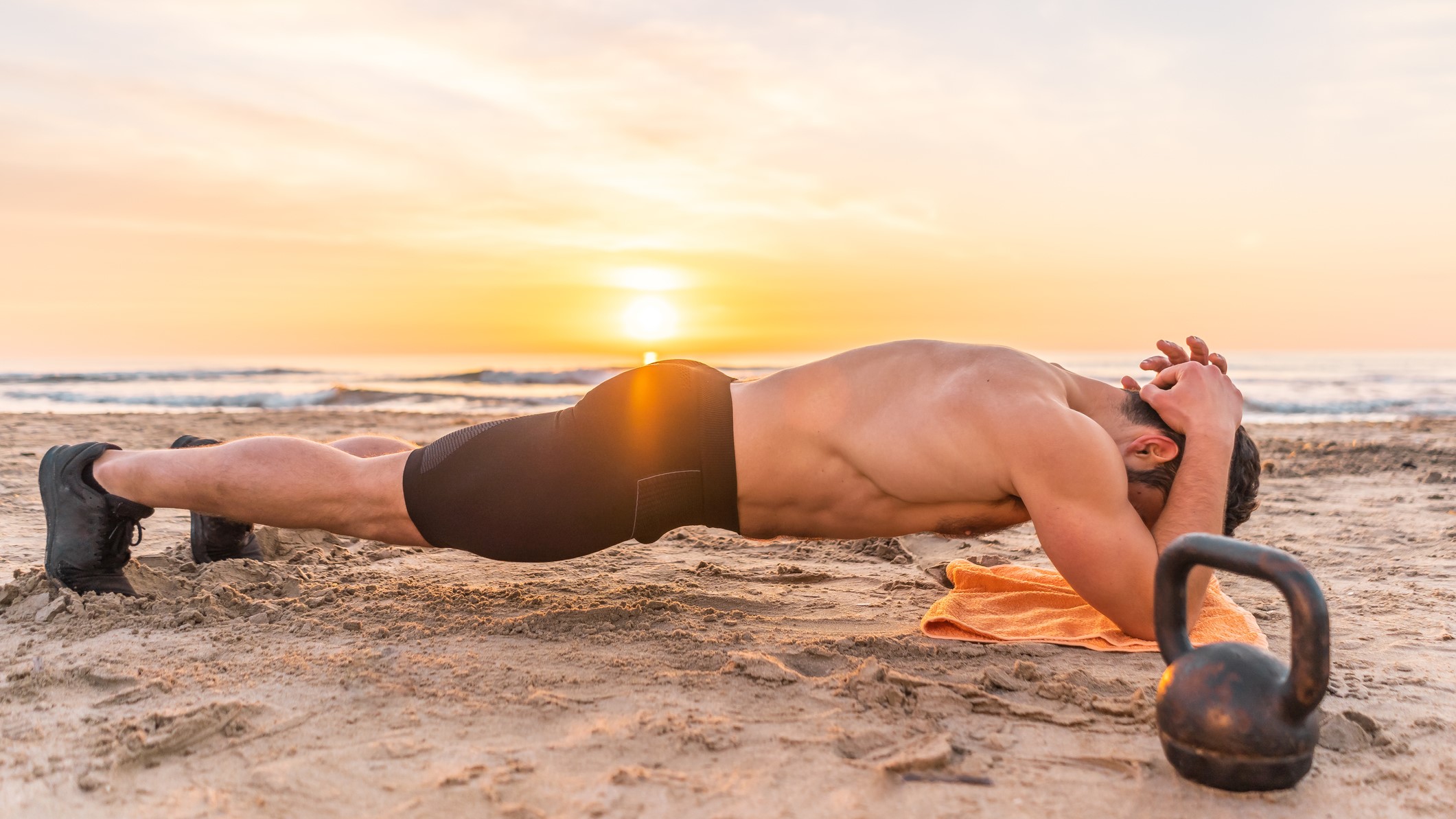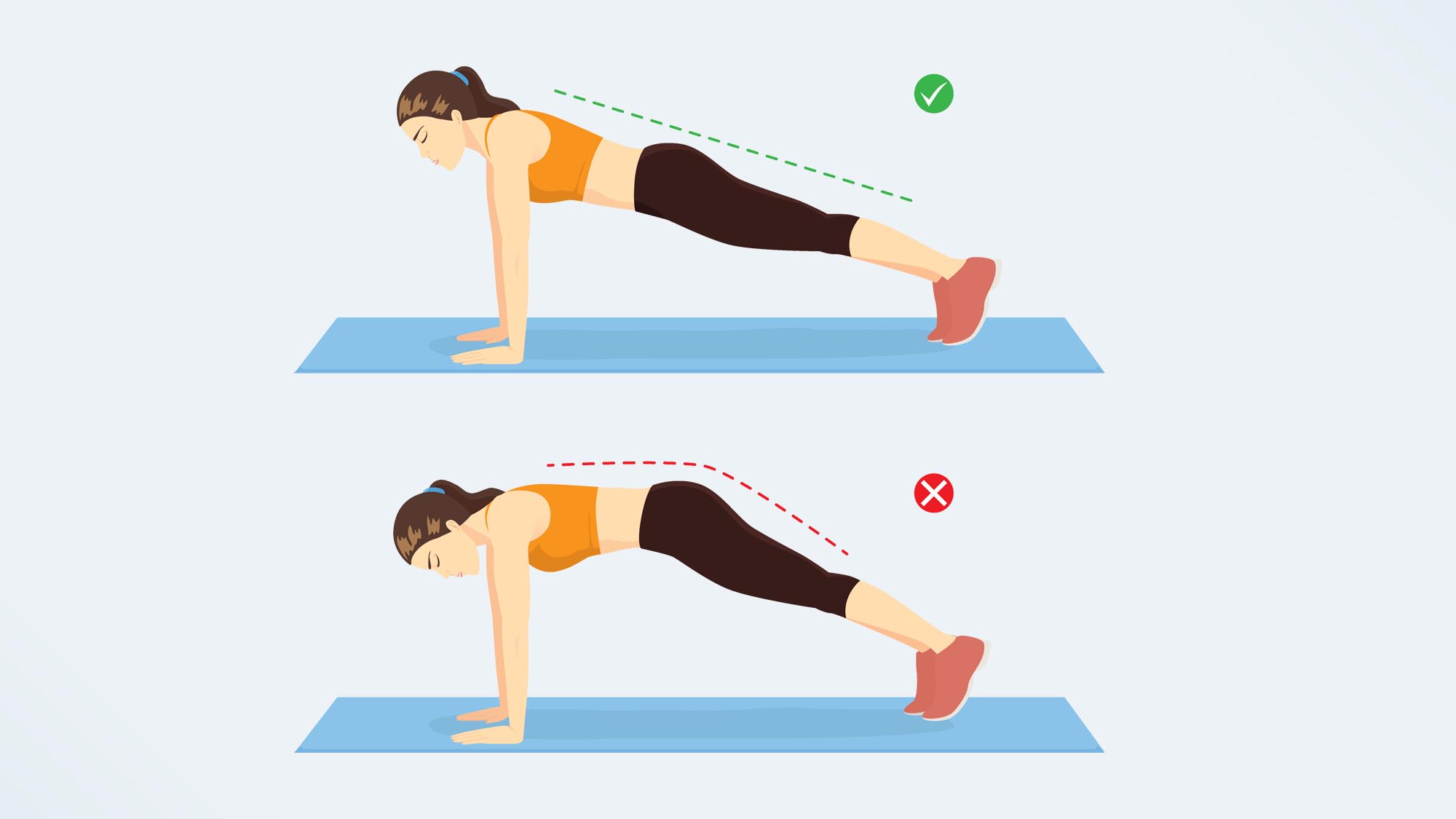I did a plank every morning for a week and was surprised with the results
Here's what a minute-long plank a day does to your core

The simple plank exercise is a staple of most of the best ab workouts, but what would happen if you held a rock-solid plank every single day for a week? As a fitness editor, I set out to find out more.
Luckily for me, you don’t need to hold a plank for as long as you think to get results — one researcher suggests you only need to hold the move for 10 seconds to work your core. A plank is an isometric exercise, designed to strengthen during the stillness, as your body works against gravity to hold the pose.
The plank is a beginner-friendly exercise, and there are a number of different plank variations to help you build strength in your core if you're looking to up the ante. The key to a perfect plank is maintaining the correct form. If you're new to the exercise, or returning to exercise following an injury, it's a good idea to check with a personal trainer before practicing the plank.
How to do a plank
Ready to find out more? Let’s start by talking about form. Your position during the plank is imperative for both the health of your spine and the results in your abs.
- In order to correctly get into the plank position, start in a press-up position, with your arms placed slightly wider than your shoulders, and your body weight resting on your hands flat against the floor, or your forearms, depending on which variation you opt for.
- Think about creating a straight line from your heels to the crown of your head, engaging your core.
- Hold for a few seconds at first, and build up to holding the plank for a minute, or as long as possible without arching your back.

I did a plank every morning for a week — here’s what happened
The week prior to this challenge, I’d been doing 100 dead bugs most mornings (here’s how to do a dead bug with perfect form) so I’d somewhat gotten used to starting my day with some sort of ab-based torture. I started the challenge with a minute-long plank, which felt enough to give me that inner ab shake, without me compromising my form and arching my back. Here's my training diary from the week:
Day one
On day one of this challenge, I unrolled one of the best yoga mats, and got into a low plank position, with my bodyweight on my forearms. I focused on squeezing my core, sucking my belly button into my spine, and keeping my glutes engaged to prevent my hips from dropping in the exercise. It didn't take long for my core to shake, but so far, so good.
Days two and three
On days two and three, I crept the plank up by 10 seconds each day as a personal challenge. As I suffer from sciatica, I did the exercise in front of a mirror to ensure I was keeping my hips in the right position — if your hips are too high, you’ll make the plank easier by taking some of the strain off the core, and if they are too low, you can put too much pressure on your lower back.
Get instant access to breaking news, the hottest reviews, great deals and helpful tips.
Planks are a pretty regular part of my training routine, but doing them everyday forced me to really think about my technique — I asked a personal trainer friend to check my form, and she noted that as I tired, I tended to hunch my shoulders and raise my eye gaze. She reminded me to keep my gaze soft, focused down to the floor in front of my exercise mat, and my shoulders relaxed, thinking about pressing my elbows down into the floor.
Day four
By day four, I realized as I was going to bed I hadn’t done my plank yet as I’d been in the office all day. With an eye roll, I did a 1-minute and 30-second plank in my PJ's with my energetic Cocker Spaniel trying to crawl underneath my stomach for some extra core training. It’s a glamorous life I lead.
Days five and six
For days five and six, I decided to mix things up by adding some movement to the plank — I dropped the timer back down to a minute but added see-saw moves — rocking my bodyweight backward and forwards, and hip-dips, dropping one hip down to the ground then to the other side, to intensify the movement. These definitely forced me to work harder — here's what happened when I did 50 plank hip dips a day for a week.
Day seven
And then finally, I was on day seven. For the final day of my challenge, I set the timer for 2 minutes and ignored my shaking core for the longest 120 seconds of my life.
The lessons learned after a week of planks? Of course, I didn’t get up off my yoga mat with a six pack, as we’ve mentioned before, defined abdominal muscles depend on a low body fat percentage. (Here’s how to calculate your body fat percentage.) But I did feel like my core felt pretty strong.
Similar to my dead bugs challenge, I also found the daily plank helped me engage my core better while running, during Pilates classes, or just walking the dog. While it might sound like something a fitness instructor shouts for fun, keeping your core engaged really does increase your performance, and helps you run, walk, and strength train with a better posture.
On a personal level, I found the dead bugs were kinder to my lower back than the planks, but I’ll be keeping them in my routine going forward. What’s the next ab challenge I hear you ask? Watch this space.
More from Tom's Guide
- I started using a Plankpad every day to torch my core — here’s my verdict
- I did knee planks every day for a week — here’s what happened
- I did 100 plank jacks every day for a week — here’s what happened

Jane McGuire is Tom's Guide's Fitness editor, which means she looks after everything fitness related - from running gear to yoga mats. An avid runner, Jane has tested and reviewed fitness products for the past five years, so knows what to look for when finding a good running watch or a pair of shorts with pockets big enough for your smartphone. When she's not pounding the pavements, you'll find Jane striding round the Surrey Hills, taking far too many photos of her puppy.
